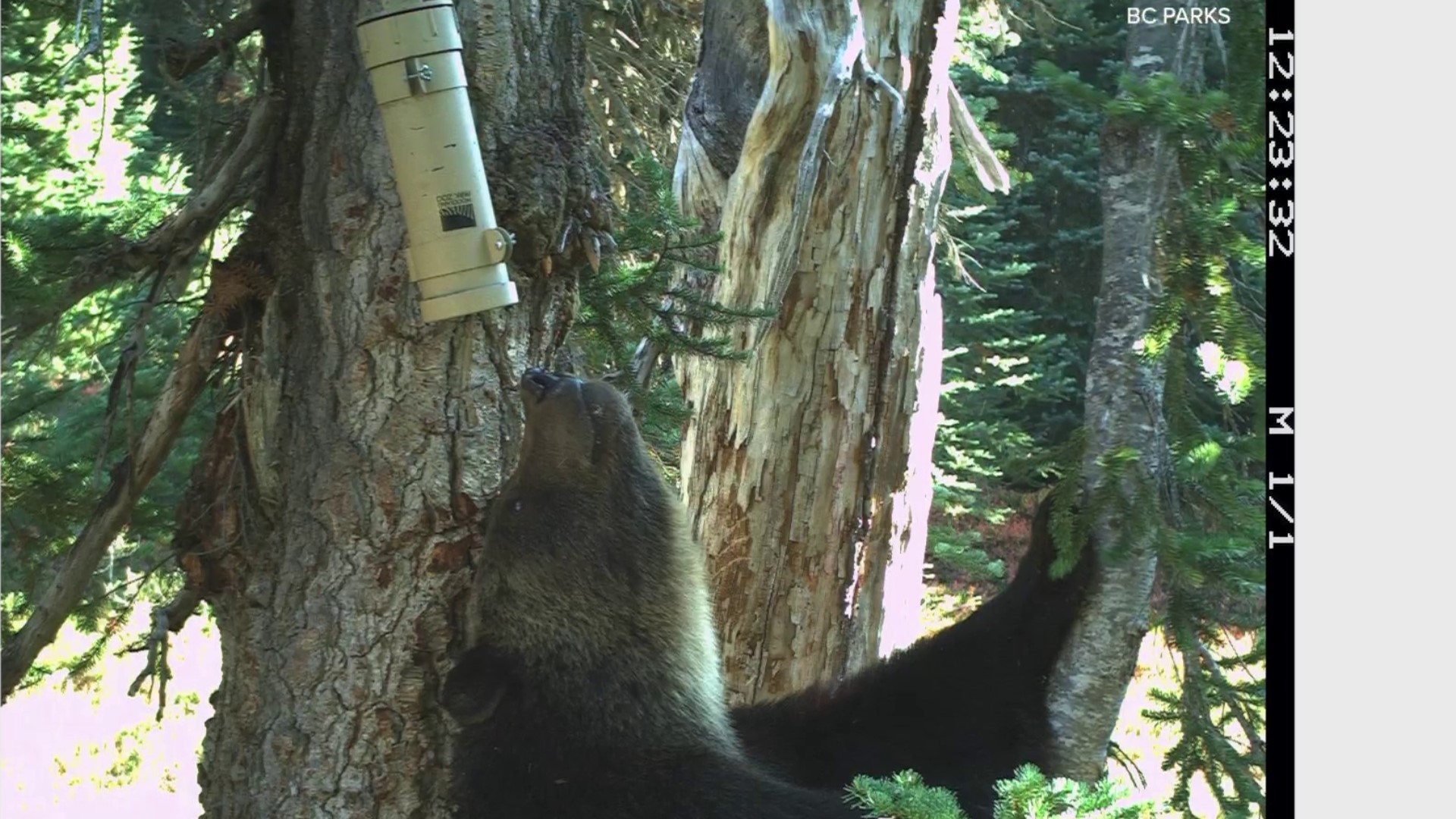SEATTLE — There's a big stink about a contraption that's made at the Woodland Park Zoo that's helping scientists study carnivores. Literally.
Dr. Robert Long, director of the Woodland Park Zoo’s Living Northwest Program, holds up the invention that looks like a long PVC tube, pulls out the inner assembly and hits the button on a timer. A pump makes a noise and liquid drips from the bottom of the tube. Mercifully, this machine is loaded with water for demonstration purposes. If it were out in the field, and loaded up with the concoction that attracts carnivores, that tiny amount of liquid would likely clear the room.
"Every other day this will turn on, the pump will engage. It's got one purpose, to do that every other day,” said Long as 3 milliliters of water splattered onto the table.
Photos of rarely seen animals in the wild: wolves, a curious Canada Lynx and a fisher in Olympic National Park were snapped thanks to automated scent dispensers the Woodland Park Zoo co-developed with Microsoft Research and Idaho Fish and Game. Long and Paula Mackay (who happen to be married) are carnivore specialists at the zoo. Their work on these scent dispensers is extensive – Long was involved with the design; they both deploy them in the wilds of Washington. They also carefully concoct the smelly stuff that goes inside at home.
"We kinda homebrew it,” explained Long. "Wanna come over?" Mackay laughed.
“It's a combination of odors, some of them quite strong, like the odor of skunk,” Long said.
"What we wanted was a device that would allow the scent to pervade the atmosphere, the air through the winter, without having to go back into these stations. Because some of these sites are very remote, inaccessible, there is avalanche danger, etc.,” Mackay said.
Volunteers assemble the dispensers at the zoo. During the spring and summer, research teams hike into the wilderness and mount the dispensers high up trees, and far away from any trail. The scent dispenses a tiny bit at a time, attracts animals and a motion sensor camera positioned near the dispenser snaps photos. The lures have enough battery power to stay up for a year, then the researchers return, and get to see what they've captured.
"Oh yes, you never get over that,” Mackay said.
Especially exciting, rare shots of wolverines. Mackay studies them; in the early nineteen hundreds they were extinct in Washington. But a small population has begun to recolonize in the North Cascades.
“When we started getting wolverines on these cameras it just changed our whole way of coming at research,” Mackay said.
Other agencies, like BC Parks, Olympic National Parks Marten Project and the Haíɫzaqv Wolf and Biodiversity Monitoring Project are also using these scent dispensers for carnivore research.
Science aside, these scent sniffing critters are cute. And the impact this innovation will have on carnivore conservation doesn't stink at all.
"Really this is all about the animals that we are trying to study and ultimately protect,” Mackay said.
KING 5's Evening celebrates the Northwest. Contact us: Facebook, Twitter, Instagram, Email.

